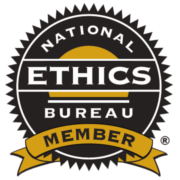PLAN YOUR RETIREMENT LIVING
When planning for retirement, many people think about how much time they’ll spend with their grandkids, which destinations they will cross off their bucket list and how many rounds of golf they will play each week.
Let’s be clear — those are amazing and important reasons to be excited about retirement. But they’re not the only things you need to be thinking about. Retirement changes the rules when it comes to finances, and it’s important to make sure you plan accordingly.
When you were working, you were earning a regular paycheck, paying bills every month and saving for the future. As a retiree, you may no longer have that steady paycheck, but the bills still keep coming. That means to pay them, it’s likely you’ll have to tap into your savings. Knowing how much income you’ll receive during your retirement could greatly affect your retirement living. That’s why it’s so important to make a retirement plan when you are healthy and independent, and can make well-informed decisions.
It helps to start by asking a couple of questions:
How much money do you need? The exact amount you need is specific to you and is based on how you want to live in retirement. Once you figure out the amount you need, the next step is to find beneficial investment strategies and tools to help you achieve your income goals.
When do you need your money? Determining when you will retire can help you determine when you will need your money. The key is to match your income needs with the correct investment strategies to satisfy those needs. Strategies will be different for everyone, and a way to find the one that’s right for you is by working with a retirement professional you can trust.
As you develop a retirement strategy, it is important to organize your money in ways that provide both immediate and future retirement income. To do this successfully, it requires a balance of what we call “Know So Money” and “Hope So Money.” What do we mean by that?
“Know So Money” consists of lower-risk assets, allowing you to reasonably depend on them to be there when you need them. For example, two of your biggest “Know So Money” retirement streams may be your pension and Social Security benefit.
Other examples of “Know So Money” include savings and checking accounts, and government-backed bonds. With these bonds, it is important to note that if you decide to cash in your bond before it matures, you could make or lose money depending on prevailing interest rates.
On the other hand, “Hope So Money” is more exposed to risk, but also offers greater return potential. Some common examples include mutual funds,variable annuities and real estate investment trust.
A retirement professional can also help you craft a financial strategy that helps ensure your “Know So Money” and “Hope So Money” are well-balanced. Balancing these two types of money is important to making sure that your retirement income can potentially last as long as you do.
It is important to organize your finances, because simply saving is rarely enough. Even the most frugal and diligent of savers may struggle to create a nest-egg large enough to support their retirement. By crafting a retirement strategy that balances your need for asset preservation and retirement income, but still has some growth potential, you may be able to effectively bridge any income shortfalls you have in retirement.
Creating the retirement income you need may have less to do with how much money you have, and more to do with when you have it. Essentially, to bridge your income shortfalls you will need strategic and purposeful retirement planning.
To take the next step in your retirement plan, contact Nevada Senior Advisors at 775-674-2223 today.

